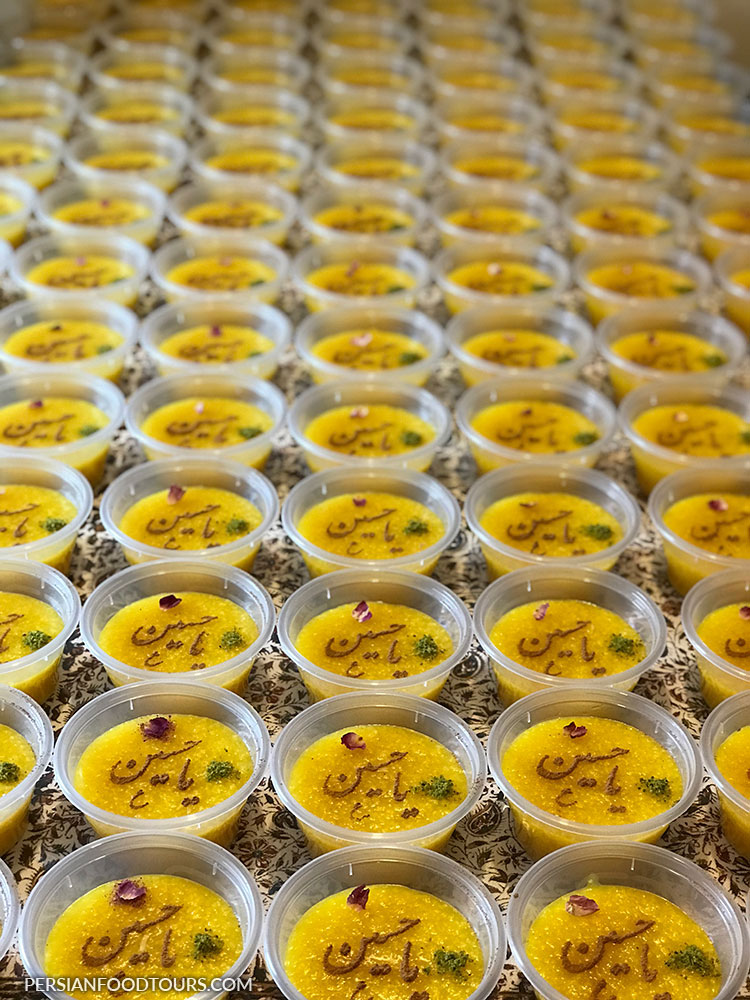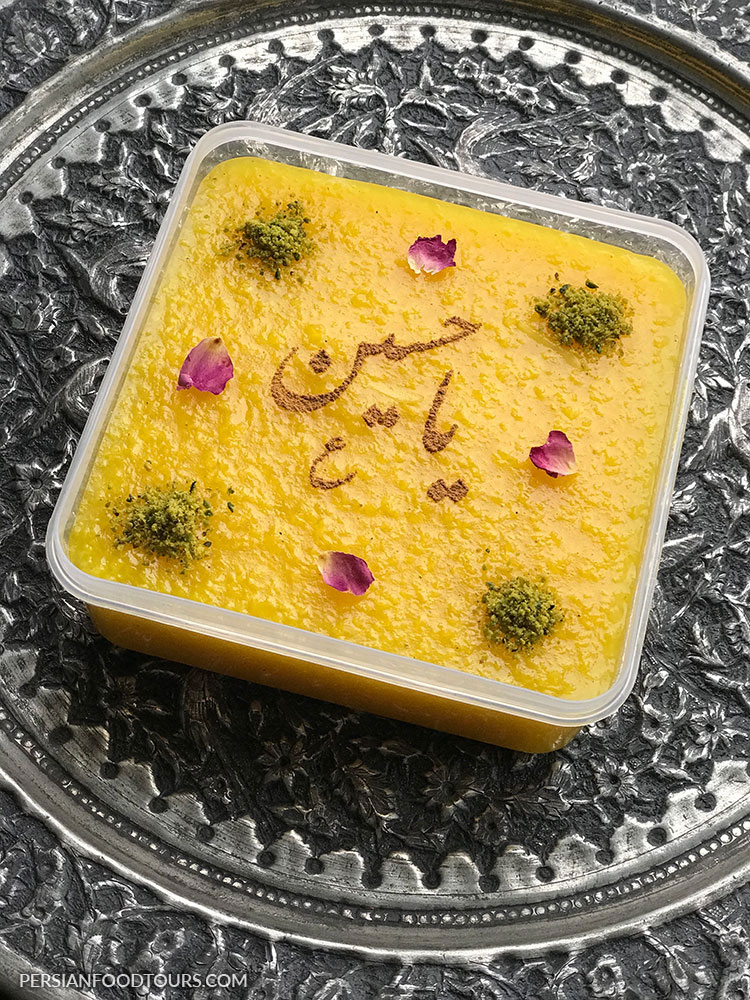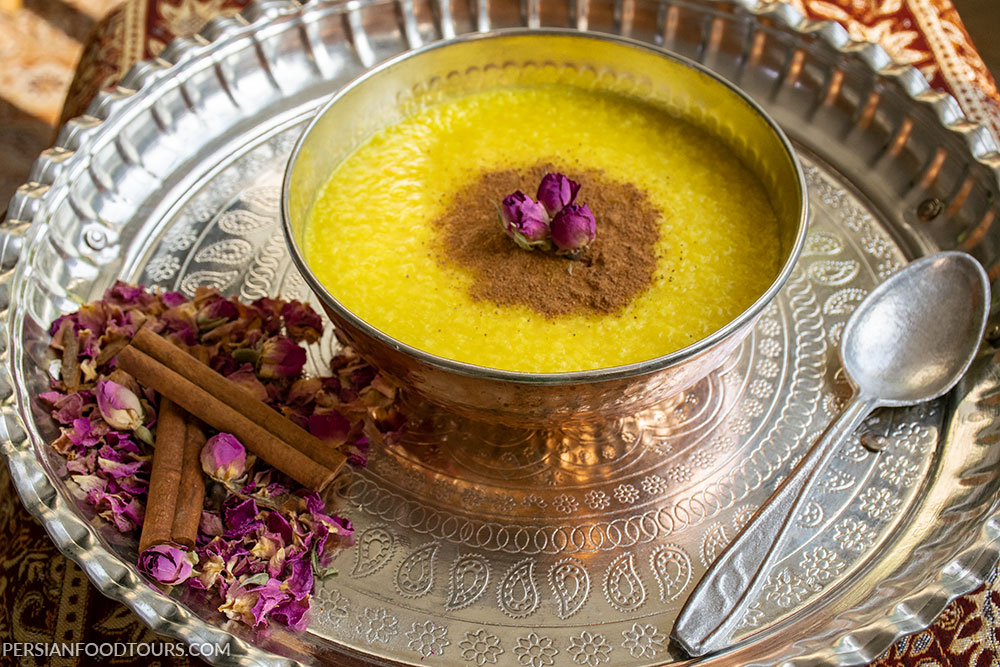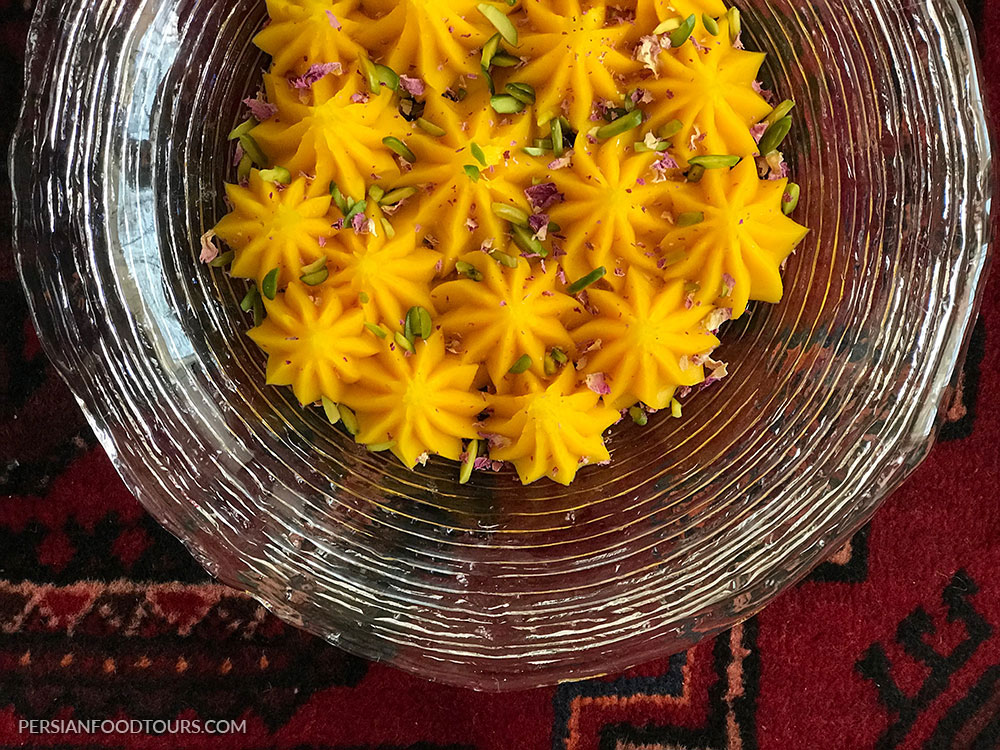In Persian culture, certain foods are usually served during hard times like funeral services or traditional religious mourning events. In Persian funerals, some sweets are usually served to help people with their potential low blood sugar.
What sweets are served in Persian funeral?
Dates and Halwas are inseparable parts in Persian memorials since the old days. according to the traditional medicine of Persia, foods with hot nature increase the metabolism of the body. Therefore, they help people to gain energy. Since both halwa and date have a hot nature, they are suitable options to serve at these events.
#1 Halva
I must admit that even though this sweet paste smells incredibly delicious because of the fragrance that comes from saffron and rose water, the smell always reminds me of memorials as it is mostly cooked for this purpose. There are several types of Halva in Iran. Each region of Iran usually has its own recipe for halva that is served in ceremonies but the most common that you can find in memorials is the one with wheat flour, rose water, butter and saffron. Here are some other types of halva:
- Carrot Halva (Halvaye Havij)
- Tar Halva
- Milk Halva (Halvaye Shir)
- Date Halva (Halva Khormayi)
- Ginger Halva (Halva Zanjebili)
Why halva is served in Persian funerals?
Halwa is an excellent choice for mourners based on the healthy properties of ingredients; Firstly, it has a strong sweet taste that comes from the mixture of water with sugar or other substitutes (Shire) which increases blood sugar immediately. Secondly, the saffron in the combination plays an important role in helping the mourners due to its antidepressant effect. Also, the rose water in halva relaxes the nervous system and therefore, it calms people.
Halvas can be served in different shapes and designs. Slivered almond and pistachios are the two most commonly used options to design halva.
#2 Dates
Since mourners usually do not have a big appetite and don’t eat properly even for several days, Dates are suitable healthy and quick bites to help them keep going.
There are a lot of different kinds of Dates in Iran that are usually found in the South. The variety is so huge that most of the time only locals can name all the types and recognize them from each other.
For ceremonies, Dates are usually served stuffed with walnuts or in the shape of little balls designed with sesame, crushed rose petals, or shredded coconut.
Along with Dates and halvas, Persian tea is a well-suited option to drink with the sweets mentioned and it can always be found in these ceremonies.
What foods are served during religious mournings in Iran?
To understand more about food traditions during religious rituals, let’s get you familiar with the concept of Nazri.

What is Nazri?
The official religion practised in Iran is Islam. There are a lot of religious days in Islam that have their tradition and story. One of the most important ones is the mourning month of Muharram and the day of Ashoura. Iranians usually donate free meals in the honour of the related event.
Nazri is the free food (usually made in big portion) that is distributed during these days.
There is no specific rule for foods that you can give away as Nazri. However, some foods are mostly served as Nazri in certain religious days. Here are some of the most famous foods that are given as Nazri:
#3 Shole Zard ( Persian saffron rice pudding)
This popular Persian dessert has a special place in my heart with its perfect smell.
Shole Zard is also a good choice for mournings due to its ingredients. Saffron and rosewater with antidepressant and calming effects on the human body are a part of this delicious golden dessert.

#4 Ash
Persian Ash is a thick soup made with different ingredients such as herbs, legumes, and meat.
There are different types of Ash in Iran. But the two most popular ones are Ash Reshteh and Ash Shole-Ghalamkar.
#5 Halim
This traditional Persian meal with wheat and shredded meat is usually served for breakfast. Halim is usually served as Nazri during the religious month of Safar. The tradition of cooking and serving this food as Nazri has been around for a long time. In some villages in Iran, all the people gather together and take a part in cooking and serving Nazri.

#6 Khoresh Gheyme (Persian split yellow peas stews)
Khoresh Gheyme is one of the most popular foods that is served as Nazri during the mourning month of Muharram. This food (like other kinds of Persian stew) is served with Persian rice.
#7 Zereshk Polo Ba Morgh (Persian Barberry rice with chicken)
Whether you are at a Persian wedding or a funeral, there is a high chance that you can find this food on the table. This Persian dish is an inseparable part of Iranian gatherings and my personal favourite!
#8 Adas polo ( Persian lentil rice)
The term “Polo” is usually used for rice mixed with other ingredients such as legumes or dried fruits. Adas polo literally means Lentil rice. This vegetarian Persian dish mostly made of Persian rice and lentils.
photos by Shirin Tahanan and Niayesh Sadrzadeh






Customer
Like!! Great article post.Really thank you! Really Cool.